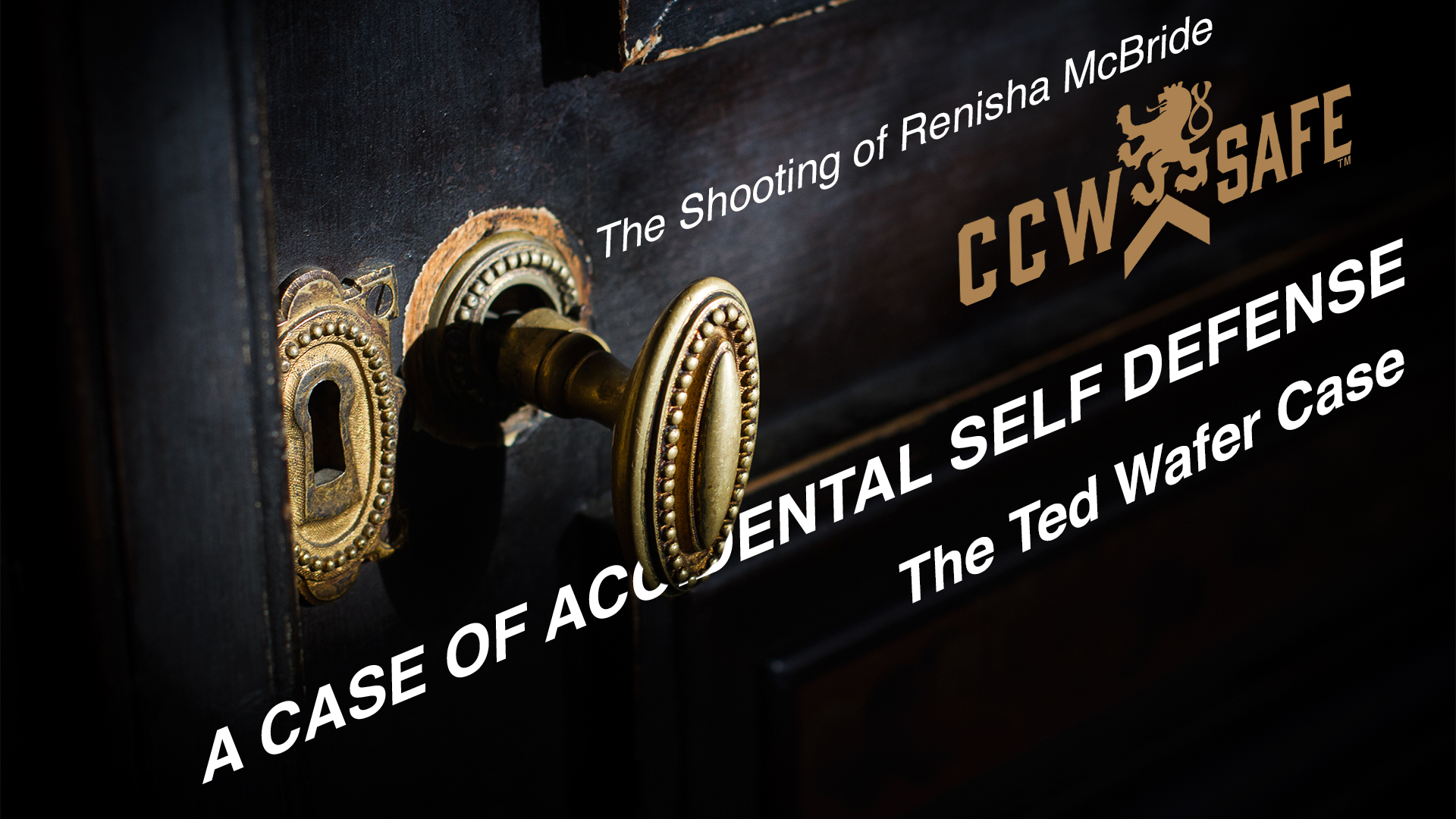
Posted on May 10, 2018 by Shawn Vincent in Shawn Vincent
The Accidental Case of Self Defense- The Shooting of Renisha McBride-Post Incident Actions
The Shooting of Renisha McBride
A case of ‘accidental self-defense’
Part 5: How Post-Incident Actions Affected the Legal Defense of Ted Wafer
When Ted Wafer was awoken at 3:45 A.M. by loud banging on his front door, he grabbed his pistol-grip Mossberg shotgun and opened the front door to confront the “shadowy figure” he had seen through the peephole. The “shadowy figure” turned out to be 19-year-old Renisha McBride, and Wafer had no way of knowing she was drunk, high, and suffering from an injury sustained in a single-driver accident hours before. When she tried to push through the locked screen door, the shotgun discharged, striking McBride in the face and killing her instantly.
While McBride lay in a pool of blood on his porch, Wafer called 911 and said, “I just shot somebody on my front porch with a shotgun banging on my door.” He hung up while the operator was still asking questions. When police arrived, he cooperated and answered their questions without advice from an attorney. “I didn’t know there was a round in there,” he told detectives. He claimed the shooting was an accident.
That statement caused Wafer big problems in his trial. As a legal argument, self-defense is an affirmative defense. You are essentially saying, “yes I shot them, but it was justified and here’s why.” You can’t shoot someone on accident and have a justifiable reason at the same time.
Wafer’s lawyer, Cheryl Carpenter, worked hard at trial to backpedal on her client’s claim that he didn’t know the gun was loaded, focusing instead on establishing reasonable fear — but prosecutors didn’t let the jury forget. The jury heard Wafer’s statement, and they heard testimony from a law enforcement firearms expert who said there was no way for the shotgun to go off by itself.
At the end of trial, jurors were instructed that they could regard prior false exculpatory statements as evidence of guilt. “Exculpatory” is a legal term for evidence that clears someone of guilt. It was devastating for the defense; it meant that if jurors thought that Wafer lied about not knowing the shotgun was loaded, they could find him guilty of murder. And after a nine day trial, they did just that: they convicted Ted Wafer of second degree murder, manslaughter, and a felony weapons charge.
Ted Wafer’s lesson for the concealed carrier or gun owner concerned with self-defense is that you should never make detailed statement to police without the advice of a lawyer. We’ll never know what Wafer was thinking when he told police that he didn’t know “there was a shot in there.” He probably doesn’t remember saying it, and he certainly couldn’t have realized that his single litter utterance could unravel all other elements of his defense claim.
The “prior false exculpatory statement” probably didn’t condemn Wafer’s self-defense argument on its own. He made a number of mistakes. In the next installment of The Four Elements of Self-Defense, we’ll review the case and look how each error compounded to make what could have been a straight-forward home defense scenario a case of unjustified homicide.

Shawn Vincent- Litigation Consultant
Shawn Vincent is a litigation consultant who helps select juries in self-defense cases, and he manages public interest of high-profile legal matters. If you have any questions for Shawn, or would like more articles like this, let us know below!